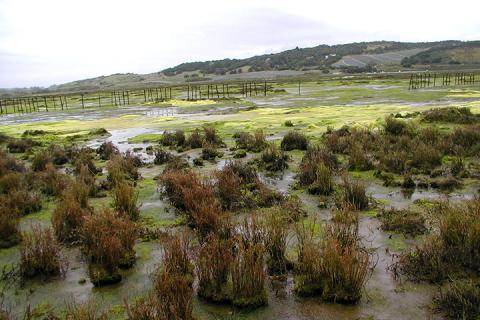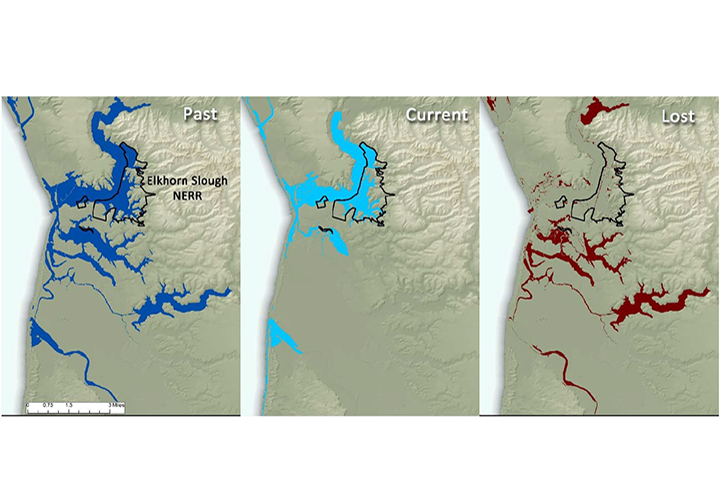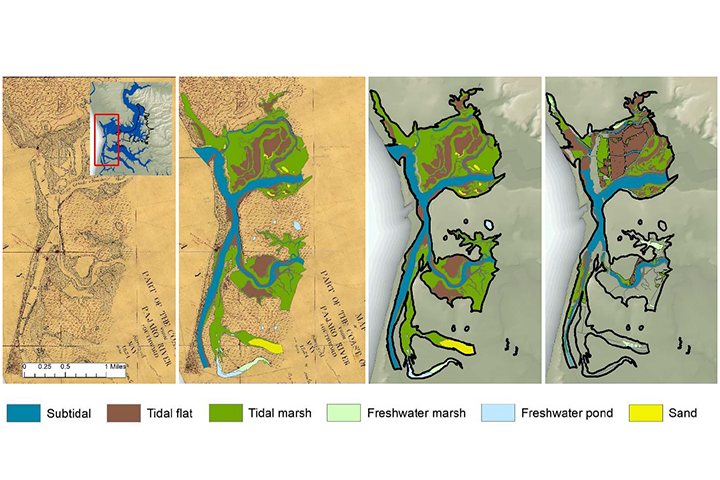
Working with local and national end users, including the NERRs and a variety of organizations interested in understanding estuarine habitat change, the project will build a shared understanding of past trajectories of change to design and build support for future restoration strategies.
In the face of climate change, understanding trajectories of change is critical for coastal management, particularly for identifying future restoration opportunities. There is therefore an urgent need both in individual National Estuarine Research Reserves (NERRs) and across the national system to identify the extent and spatial patterns of estuarine habitat loss. By engaging all 29 reserves from across the country in a habitat-change analysis, this project will highlight differing trends among regions and estuarine habitat types. The project will identify areas where estuarine habitats can be restored, along with their services such as fish habitat and carbon sequestration.
The habitat change analysis will include the following two components conducted at each of the 29 reserves: 1) Elevation-based mapping, using NOAA-generated elevation models and tidal datums to estimate the historic extent of the estuary, and identify areas no longer subject to tidal influence that could be restored in the future (Brophy et al. 2019), and 2) Historical mapping, using the oldest T-sheet (topographic map) or similar historic map to examine extent and distribution of habitats in one smaller area of interest on/near each reserve, and document how that has changed over time. The mapping approach will be applicable to any U.S. estuary. The project will generate reserve-specific products, including maps of past, current, and potential future estuary extent, summaries of habitat change, and interactive web-based visualizations, as well as resources for national users, including a synthesis of habitat change across US estuaries and restoration opportunities. This suite of products will be informed by users and will strengthen strategic planning for estuarine habitat conservation and restoration, locally and nationally.
Project Lead Kerstin Wasson (Elkhorn Slough National Estuarine Research Reserve) gives an introduction to "HiTIDER: History and Topography to Improve Decision-making for Estuary Restoration," a collaborative research project funded in 2020 by the NERRS Science Collaborative. The presentation was given at a virtual project workshop in October 2021.

